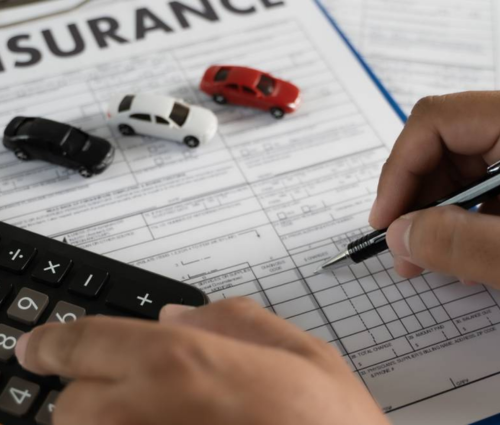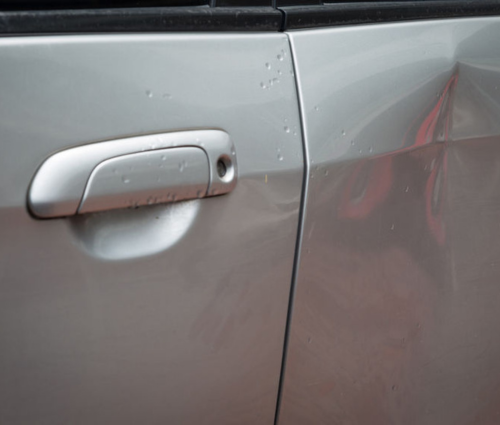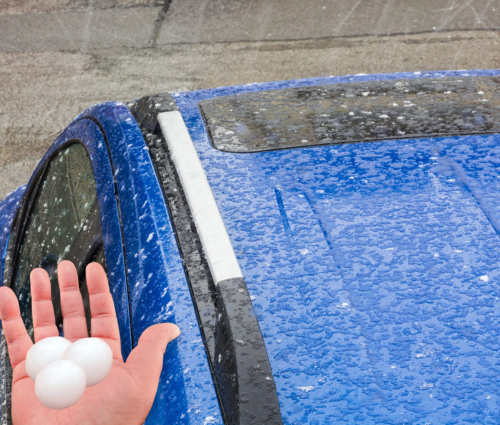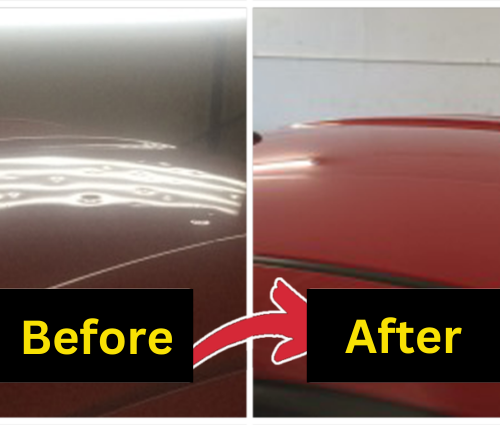Complete Hail Damage Repair Process from Claims to PDR
Hail Repair Steps
Filing a Hail Damage Insurance Claim

The first step in the hail damage repair process is filing an insurance claim. Contact your insurance provider immediately after the storm to report the damage. Documenting the dents with clear photos and taking notes of the damage can support your claim.
Most insurance companies require prompt reporting, so timely action is essential. Be sure to understand your policy’s coverage, as it might specify repair methods like Paintless Dent Repair (PDR). Working with repair shops that specialize in managing insurance claims for hail repair assures an efficient claims process and quicker repair approval.

Assessing the Extent of Hail Damage
Once the insurance claim is filed, the next step is thoroughly assessing the vehicle’s damage. This involves a detailed inspection by a professional to identify all dents, cracks, and potential paint damage. A comprehensive evaluation is important, as it determines the extent of damage and whether Paintless Dent Repair (PDR) or traditional bodywork is needed for effective restoration.
Small to medium-sized dents are often best suited for PDR, as this technique reshapes the dent from the inside without affecting the paint. PDR is a faster and cost-effective option that maintains the vehicle’s factory finish, making it ideal for minor hail damage. However, if the inspection reveals deeper dents, paint chipping, or structural damage, traditional repairs may be required to assure complete restoration and safety.
Accurate damage assessment is a difficult part of the complete hail repair guide, as it sets the foundation for effective repairs and helps prevent hidden damage from being overlooked. For an expert evaluation, always consult a repair shop experienced in hail damage. They can provide the most appropriate repair plan. Learn more about this process on our Hail Damage Repair page.
Understanding Paintless Dent Repair (PDR) Benefits

Paintless Dent Repair (PDR) is a highly effective method for addressing minor to moderate hail damage. This innovative technique involves carefully massaging the dent from behind the panel, allowing technicians to restore the vehicle’s original shape without altering the paint or structural integrity.
Many vehicle owners appreciate PDR not only for its ability to deliver excellent results but also for its efficiency and cost-effectiveness. Since the process doesn’t require repainting or extensive bodywork, repairs can often be completed quickly, allowing drivers to get back on the road sooner. Additionally, PDR is an environmentally friendly option, as it minimizes waste and avoids the use of harmful chemicals commonly associated with traditional repair methods. By choosing Paintless Dent Repair, vehicle owners can achieve high-quality repairs.

Traditional Repairs for Severe Hail Damage
Traditional repairs are necessary when hail damage is severe, involving deep dents, paint chipping, or broken panels. Unlike Paintless Dent Repair (PDR), traditional bodywork requires sanding, filling, and repainting to restore the vehicle’s appearance and integrity. This method is more time-consuming but is essential for addressing extensive damage that cannot be fixed with PDR alone.
Deep dents that have compromised the paint layer are not suitable for PDR, making traditional repairs the preferred choice. These repairs assure a complete restoration, including color-matched repainting to preserve the vehicle’s original look. While traditional methods take longer and are more costly, they offer a comprehensive solution for heavily damaged body panels, confirming safety and a polished finish.
Knowing when to opt for traditional bodywork versus PDR is important to achieving the best repair outcomes. Proper assessment by a professional can guide this decision. For detailed information on handling severe hail damage, visit our Complete Hail Repair Guide.
Navigating the Insurance Claim Process Smoothly
Navigating the insurance claim process for hail repair can be challenging, but proper documentation makes it easier. Start by taking detailed photos of the damage and gathering repair estimates from a certified shop like VIP Hail Service. Accurate documentation helps expedite claim approval.
Working with repair shops familiar with hail damage claims can further streamline the process. These shops often collaborate with insurers to assure faster approvals and smoother repairs. Having professionals manage your claim reduces stress and assures timely repairs.
Remember, acting promptly is difficult, as insurance companies typically have strict timelines for reporting hail damage. Failing to report within the specified period can result in claim denial, leaving you responsible for repair costs.

Tips for Preventing Future Hail Damage
Preventing hail damage involves taking proactive measures to protect your vehicle. Whenever possible, park in a garage or under a covered structure during hailstorms. If indoor parking isn’t available, use protective covers specifically designed for hail, as they can absorb some impact and reduce damage. Regularly monitor weather forecasts to stay informed about potential hail risks, allowing you to plan accordingly. Consider investing in weather apps that provide real-time storm alerts. These steps can significantly minimize damage, reduce repair costs, and help maintain your vehicle’s condition and long-term value.
Key Steps in the Hail Repair Process
The complete hail repair process starts with documenting the damage and filing an insurance claim. Begin by taking clear photos of dents, cracks, and any broken parts, as these images will support your claim. Assure you capture the damage from multiple angles to provide detailed evidence. Contact your insurance provider immediately to review coverage details, timelines for reporting, and requirements for repair methods like Paintless Dent Repair (PDR).
The next step is a thorough professional damage assessment. A certified technician inspects the vehicle to identify all visible and hidden damage, such as deep dents, paint chipping, or weakened areas. This evaluation determines the most suitable repair method PDR or traditional bodywork. PDR for hail damage is ideal for minor dents, offering a faster, more cost-effective solution. In contrast, traditional repairs are necessary for more severe damage, including deep dents or compromised paint, to assure full restoration.
Once the insurance claim is approved, repairs are performed based on the damage assessment. PDR is quicker, typically completed in a few hours, while traditional bodywork takes longer due to sanding, filling, and repainting. After repairs, inspect the vehicle thoroughly to assure all damage has been addressed. For a comprehensive understanding of the hail repair process, visit our Paintless Dent Repair page.
Repair Timeline and Completion Expectations

The timeline for hail damage repair varies based on damage severity and the chosen repair method. Paintless Dent Repair (PDR) generally takes a few hours to a day, making it the quicker option for minor dents, as it involves reshaping the dent without the need for extensive bodywork. In contrast, traditional repairs can take several days, as they require sanding, filling, repainting, and adequate drying time for each step.
Working with a certified repair shop provides a more accurate timeline, allowing you to understand what to expect and plan for temporary transportation if needed. Knowing the estimated duration helps minimize inconvenience and assures a smooth repair process. For detailed information on repair timelines and options, visit our Hail Damage Repair page where you can explore comprehensive repair solutions based on your needs.

Final Thoughts on the Hail Repair Process
Understanding the complete hail repair process is key to cconfirming effective repairs and maintaining your vehicle’s value. From filing insurance claims to selecting the right repair method, each step is important for a successful outcome. Minor dents are best repaired with PDR, while severe damage requires traditional bodywork to assure full restoration. By choosing the appropriate repair method based on the extent of damage, you can assure lasting results and protect your vehicle’s resale value.
Working with a reputable repair shop like VIP Hail Service not only simplifies the process but also guarantees reliable repairs. From managing claims to performing quality work, VIP Hail Service provides comprehensive support every step of the way. Timely repairs not only save money but also prevent further complications that could compromise safety and vehicle performance. Acting quickly helps maintain the car’s structural integrity and overall appearance.

VIP Hail Service | Plano, TX
Professional Hail Repair
Stay Up-to-date With Our Content
Subscribe to learn more about our mission!


